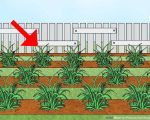How to Prepare Your Lawn for Summer Heat
The summer heat can be hard on your lawn, causing it to lose its vibrancy, dry out, or even die off. As someone who loves maintaining a beautiful yard, I’ve learned that preparing your lawn for the hot months is crucial to keeping it healthy and green. Over the years, I’ve found several key strategies that help my lawn thrive despite the sweltering temperatures. Let me share my tips on how to prepare your lawn for summer heat so it can withstand the tough conditions and continue to grow strong.
1. Early Spring Preparation: Set the Foundation for Healthy Summer Grass
Before the summer heat even starts, it’s essential to give your lawn the right foundation in the spring. This involves a few key steps that can make all the difference once the heat sets in. First, I recommend fertilizing your lawn with a balanced, slow-release fertilizer. This helps ensure your grass has the nutrients it needs to grow strong roots, which are critical for surviving the summer heat.
a. Aerating the Soil
Aerating your lawn can help relieve compaction and improve water and nutrient flow to the roots. I’ve noticed that after aerating, my lawn stays healthier in hot conditions because the roots are better equipped to absorb water.
b. Mowing Properly
It’s tempting to mow your grass short, especially if you like that fresh, well-groomed look. But cutting your grass too short can cause it to dry out faster during the summer heat. I make sure to mow my lawn at the right height – usually around 2.5 to 3 inches – to help it stay resilient and shade the soil.
2. Watering Effectively: The Lifeblood of Your Lawn During Hot Months
When the temperature rises, watering becomes the most important task for lawn care. Watering early in the morning, ideally before 10 AM, helps prevent evaporation, which means the grass can absorb more water. I find that watering too late in the day can lead to fungal growth, while midday watering leads to quick evaporation. It’s essential to water deeply and infrequently, as this encourages deeper root growth.
a. Understanding How Much Water Your Lawn Needs
On average, a lawn needs about 1 to 1.5 inches of water per week during the summer. However, the exact amount can vary based on your grass type, climate, and soil. I recommend checking the moisture level in your soil regularly to ensure you’re meeting your lawn’s needs.
b. Avoiding Overwatering
Overwatering can be just as harmful as underwatering. It leads to shallow root systems and promotes weed growth. I use a simple trick: water deeply but less frequently to help my grass grow strong, deep roots that can survive the hot months.
3. Choosing the Right Grass for Summer Heat
Some grass varieties are better suited to the heat than others. If you live in an area with particularly hot summers, it might be worth considering heat-resistant grass varieties like Bermuda grass or Zoysia. These types of grass are more drought-tolerant and require less water during the summer months. Over the years, I’ve found that investing in the right grass seed for my climate has significantly improved the health of my lawn during summer.
a. Warm-Season vs. Cool-Season Grasses
Warm-season grasses like Bermuda, Zoysia, and St. Augustine thrive in high temperatures and are perfect for the summer heat. On the other hand, cool-season grasses like Kentucky bluegrass and fescue do better in cooler temperatures and might need extra care during summer.
b. Transitioning Between Seasons
If you’re in an area with harsh temperature fluctuations, consider overseeding your lawn in the fall to transition between the seasons smoothly. This gives your lawn a head start in preparing for the next summer.
4. Mulching: The Secret to Moisture Retention
Another great tip for keeping your lawn healthy in the summer heat is mulching. Mulch helps retain moisture in the soil, which is particularly helpful during dry spells. I’ve found that applying a thin layer of mulch to the base of my plants and flower beds not only conserves water but also keeps the soil temperature more consistent, protecting the roots from extreme heat.
a. Benefits of Organic Mulch
Organic mulch, such as wood chips, straw, or grass clippings, is excellent for your lawn and garden. It decomposes slowly, enriching the soil and improving its structure. It also reduces the need for constant watering, saving you time and effort in the long run.
b. Applying Mulch the Right Way
When applying mulch, I make sure to spread it evenly and keep it a few inches away from the stems and trunks of plants. Too much mulch piled up against the base can lead to fungal diseases, which I try to avoid by keeping it neat and manageable.
5. Dealing with Weeds and Pests: Protect Your Lawn from Summer Challenges
Summer isn’t just about heat – it’s also a time when weeds and pests can wreak havoc on your lawn. Regularly checking for signs of pests like grubs, chinch bugs, and aphids can prevent them from causing serious damage to your grass.
a. Weed Control Methods
A thick, healthy lawn is your best defense against weeds. I always make sure to apply a pre-emergent herbicide in the spring to prevent weed seeds from sprouting. If I do find weeds popping up, I pull them by hand or use a targeted herbicide that’s safe for my type of grass.
b. Natural Pest Control
To control pests naturally, I rely on beneficial insects like ladybugs and predatory nematodes, which help keep harmful bugs at bay without the need for harsh chemicals.
6. Protecting Your Lawn During Extreme Heatwaves
There will be days when the heat is just unbearable, and even the most prepared lawns can struggle. During extreme heatwaves, it’s essential to provide extra protection for your lawn.
a. Creating Shade for the Lawn
If possible, I try to provide some shade for my lawn during the hottest part of the day. Planting trees, setting up umbrellas, or using shade cloth can help protect your grass from direct sunlight. This simple step has saved my lawn on numerous occasions during brutal summer heatwaves.
b. Lowering Lawn Mowing Height During Heatwaves
During extreme heat, I lower my lawn mower blade slightly. This prevents the grass from getting too stressed and helps it retain moisture. A slightly longer lawn can also provide more shade for the roots.
Conclusion
Taking the time to properly prepare your lawn for summer heat can make all the difference in keeping it green and healthy. From early spring preparation and smart watering habits to choosing the right grass type and protecting against pests, every action you take helps your lawn survive the harsh summer months. By following these tips and staying consistent with your lawn care routine, you'll enjoy a beautiful and thriving yard throughout the hot season.








